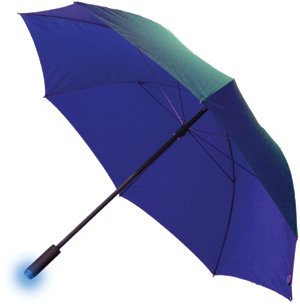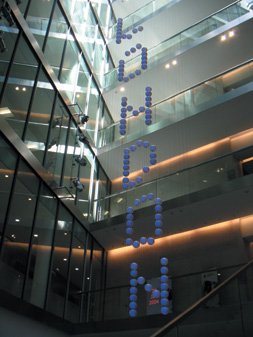| Most of the digital devices we use now and the applications therein require a large expenditure of our time and attention. We have to monitor them, customize them, and attend to them when they beep at us, flash alerts, issue reminders to upgrade or register, or tell us when something is wrong. Many people spend an inordinate amount of time responding to their devices' demands instead of doing their work. This is where ambient devices and what computer scientists Marc Weiser and John Seely Brown named "calm technologies" come in. Ambient devices (which are really a subset of calm technologies) don't ask for attention. They exist on the periphery of human senses, offering information, but not insisting that people pay attention or act on that information. They aren't alarms, and if they go unnoticed, that is fine. They are supposed to be unobtrusive. Personal ambient devices (Figure 7.11) haven't really caught on, except as novelty items. The major potential for ambient devices may be in public places (see "The Source" case study). Imagine a parking structure where the outside of the building indicates how full it is. Or a sports stadium whose lights change based on how the home team is doing. Or a water fountain that changes its spray depending on the weather forecast. The possibilities are endless. Figure 7.11. An umbrella that displays weather data in its handle designed by David Rose for Ambient Devices. If the chance of rain is 100 percent, the light pulses 100 times a minute. If rain is less likely, the pulsing decreases proportionately. 
courtesy of Ambient Devices
Case Study: The Source The Company Greyworld, a group of London-based artists and designers, commissioned by The London Stock Exchange. The Problem Greyworld wanted an engaging, visual representation of what for most people is a confusing tangle of data: the stock market. The Process Greyworld took six months to build what was eventually called The Source, an eight-story-high sculpture installed in the atrium of the new London Stock Exchange building. The Source is made up of 729 spheres with LEDs inside them that are suspended from cables that stretch to the top of the building. Each sphere can move independently up and down its cable, allowing the spheres to form shapes and patterns. Their internal lights can form other fleeting shapes.
The Source consists of 729 spheres and took six months to build. Here the spheres move into a pattern suggested by the state of the market. 
courtesy of Greyworld The Solution The Source is manipulated by a computer running Python scripts that fluidly moves the spheres into dynamic shapes that reflect what's happening with the stock market. Just like the ringing of the bell to signal the opening of the New York market, each day the glowing spheres break out of a cube arrangement, flying upward to signify the opening of trading. Once "awake," the spheres form patterns based on the market that can be observed throughout the building. At the end of each day's trading, the balls fall back into their cube arrangement, and an animated arrow using the blue LEDs inside the spheres points up or down to show how the stock market performed on that particular day.
The spheres can be formed into many different shapes, including words for special occasions. 
courtesy of Greyworld |
|


